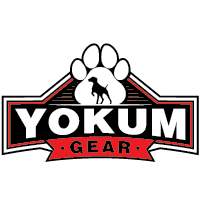Training a dog can be a rewarding yet challenging experience, and one of the most essential tools in this journey is a suitable training leash. Given the myriad of options available, selecting the right leash can be a daunting task. This article aims to guide you through the key considerations to make an informed decision for you and your furry friend.
Types of Training Leashes
The first step in choosing the right leash is understanding the different types available and their specific uses. Here are some common types:
Standard Leashes
Standard leashes are the most common type, typically ranging from 4 to 6 feet in length. These are best suited for everyday walks and basic training involving short distances.
Retractable Leashes
Retractable leashes allow the dog more freedom to roam, extending up to 26 feet. However, they may not be ideal for training purposes as they offer less control, which can be crucial when teaching commands.
Slip Leashes
Slip leashes function as both a collar and leash, tightening when your dog pulls. These are effective for dogs that need work on pulling behavior but should be used with caution to avoid any injury to the dog’s neck.
Martingale Leashes
These leashes combine aspects of a martingale collar and a leash, providing added control for dogs prone to slipping out of collars. They are particularly useful for breeds with narrower heads.
Long Lines
Long lines are typically 15 feet or longer and are excellent for distance training, such as recall exercises. They allow the dog to explore while still giving you control.
Material Considerations
The material of the leash is another crucial factor to consider, contributing to durability, comfort, and control.
Nylon
Nylon leashes are widely used due to their affordability and variety. They are strong and lightweight but may cause burns if the dog pulls suddenly.
Leather
Leather leashes are known for their durability and comfort, becoming softer with use while retaining strength. They are more expensive but can last for years with proper care.
Chain
Chain leashes are tough and can deter dogs from chewing, but they are heavier and less comfortable to hold, making them less desirable for long training sessions.
Cotton
Cotton leashes offer a good balance between comfort and durability. They are particularly effective in wet conditions as they dry faster than nylon or leather.
Features and Extras
There are additional features and enhancements that can make a leash more convenient and effective for training purposes.
Adjustable Length
Some leashes offer adjustable lengths, allowing you to use the same leash for different training exercises, from heel work to recalls.
Padded Handles
Padded handles provide extra comfort for your hand, especially helpful during long training sessions or if the dog tends to pull.
Reflective Stitching
For those who train or walk their dogs during low-light conditions, reflective stitching can increase visibility and safety.
Knowing Your Dog's Needs
Lastly, consider your dog’s specific needs. A young, energetic puppy might benefit from a long line to burn off energy, while an older or well-trained dog might do well with a standard or martingale leash for more control.
Remember that training is a gradual process, and the right leash can significantly impact your success. By understanding the types, materials, and features available, you can choose a leash that aligns with both your training goals and your dog's comfort and safety.
Investing time in selecting the appropriate training leash will make the endeavor smoother and more enjoyable for both you and your beloved canine companion.

